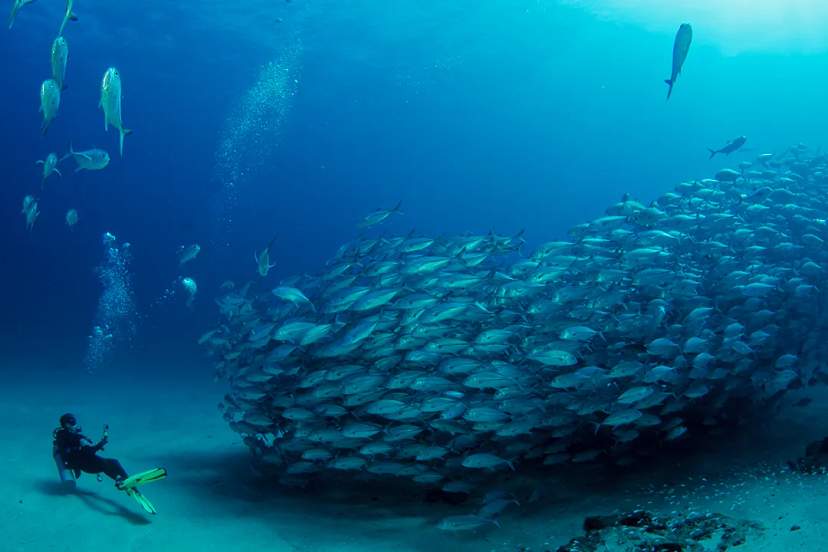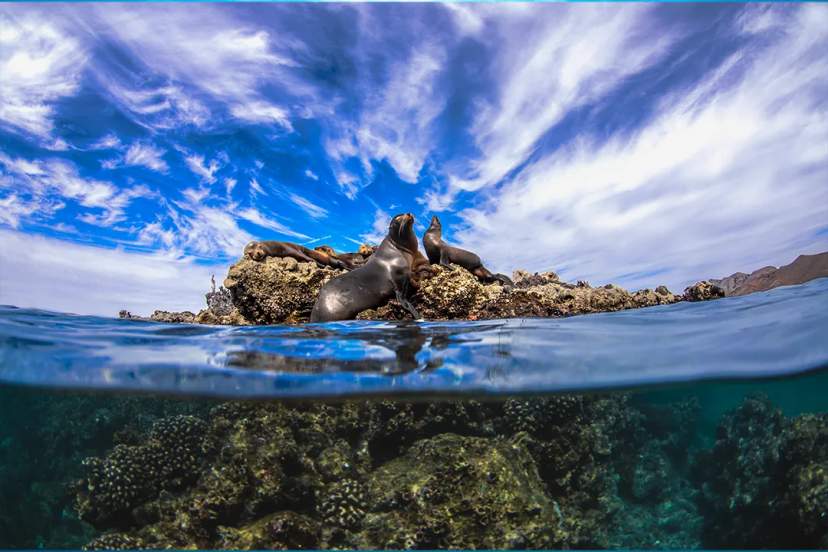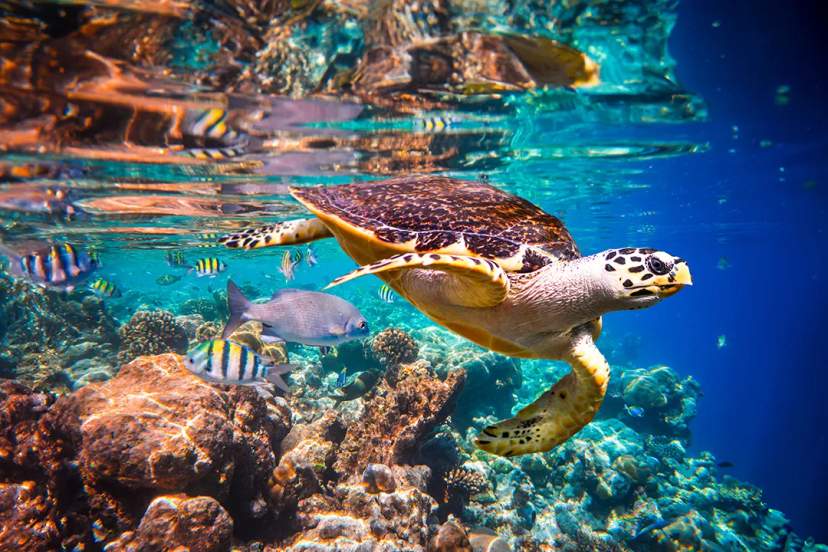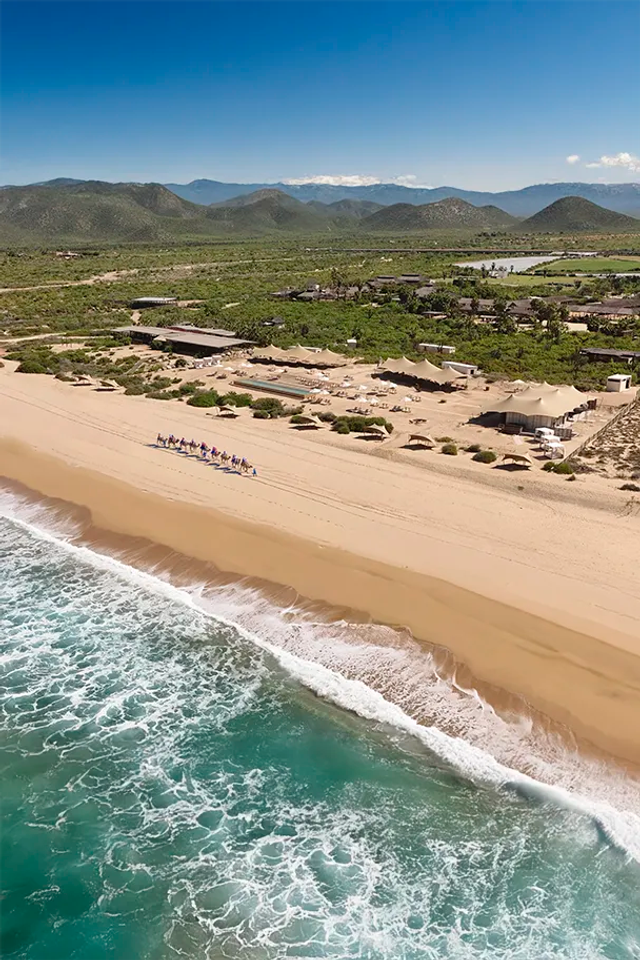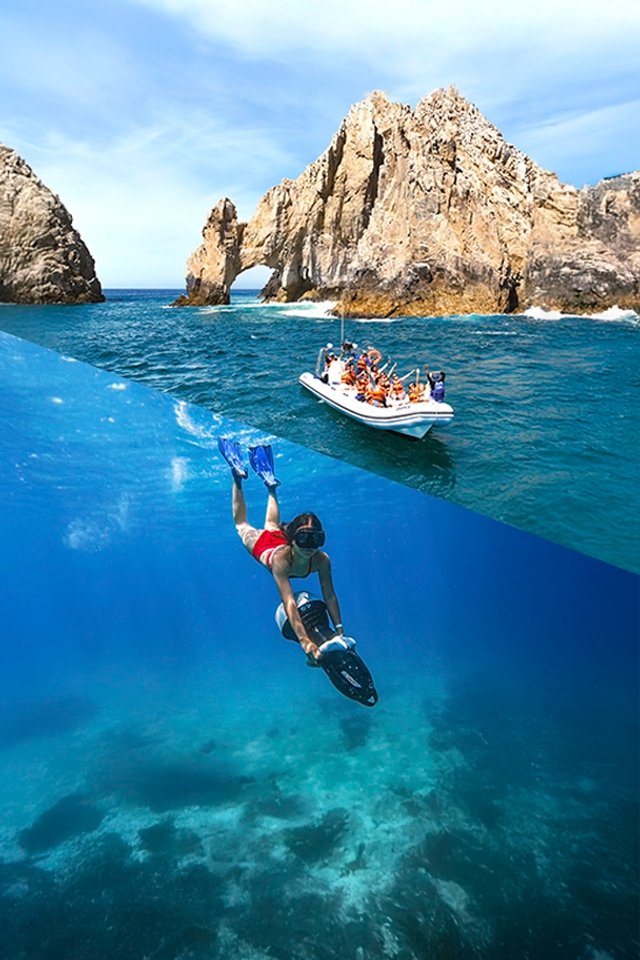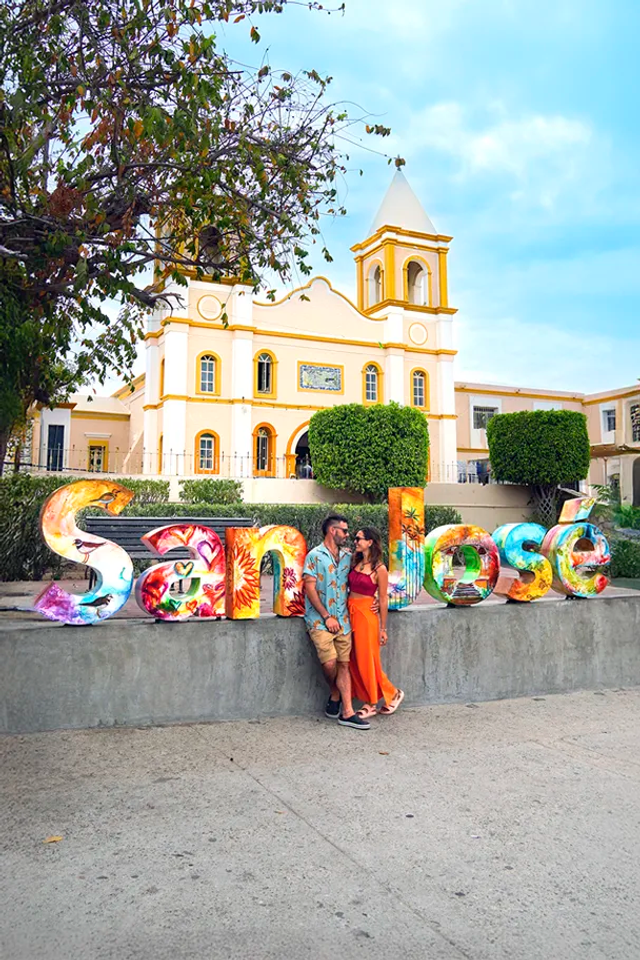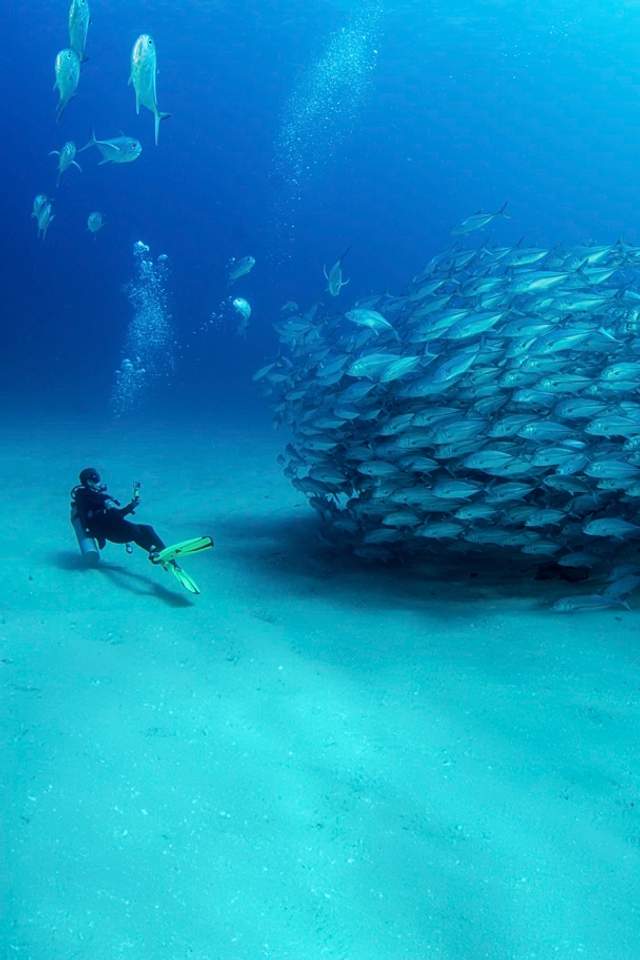Imagine floating beneath the surface at Land's End, where granite formations plunge into the depths as sea lions dance through sunlit waters. Ancient geological forces have shaped dramatic coastlines that guide majestic whales on their seasonal journey from Arctic waters to Baja's warm lagoons.
Our ten curated destinations showcase underwater marvels unique to this region. Between ocean explorations, discover Cabo's rich colonial heritage in historic missions and vibrant cultural centers. These waters teem with such diverse marine life that they fascinate scientists and adventurers alike. Complete your journey with visits to centuries-old missions, cultural exhibits, and charming plazas revealing Cabo's authentic character.
1. Cabo Pulmo National Marine Park
Cabo Pulmo represents the crown jewel of Baja's marine conservation success story; a once-depleted fishing area transformed into a thriving underwater paradise that now boasts a 400% increase in marine biomass. This protected sanctuary harbors the oldest of only three coral reefs on North America's west coast, dating back an astonishing 20,000 years.
The park's crystal-clear waters reveal extraordinary marine biodiversity with visibility often exceeding 100 feet, allowing unobstructed views of massive bull shark gatherings, enormous schools of jack fish that move like living tornadoes, and seasonal whale shark encounters. UNESCO recognized this remarkable regeneration by designating Cabo Pulmo a World Heritage Site.
The Cabo Pulmo Snorkel Expedition provides expert-guided access to this marine miracle with transportation and professional equipment included. Your guide navigates to pristine snorkeling sites normally inaccessible to independent travelers, interpreting the complex ecological relationships that make this recovered ecosystem so scientifically significant.
2. Land's End and El Arco
Land's End and El Arco serve as Cabo's geological masterpiece, where two powerful ocean systems converge to create the biological richness that captivated Jacques Cousteau. These granite formations, sculpted over millennia, descend into crystal-clear waters as natural cathedrals, with features like Neptune's Finger rising dramatically from the depths.
The nutrient-rich environment nurtures an extraordinary ecosystem; graceful sea turtles navigate through vibrant fish schools while sea lion colonies perform their underwater ballet. This convergence zone functions as both nature's aquarium and the region's most distinctive landmark, positioning Cabo San Lucas as a premier destination for marine encounters.
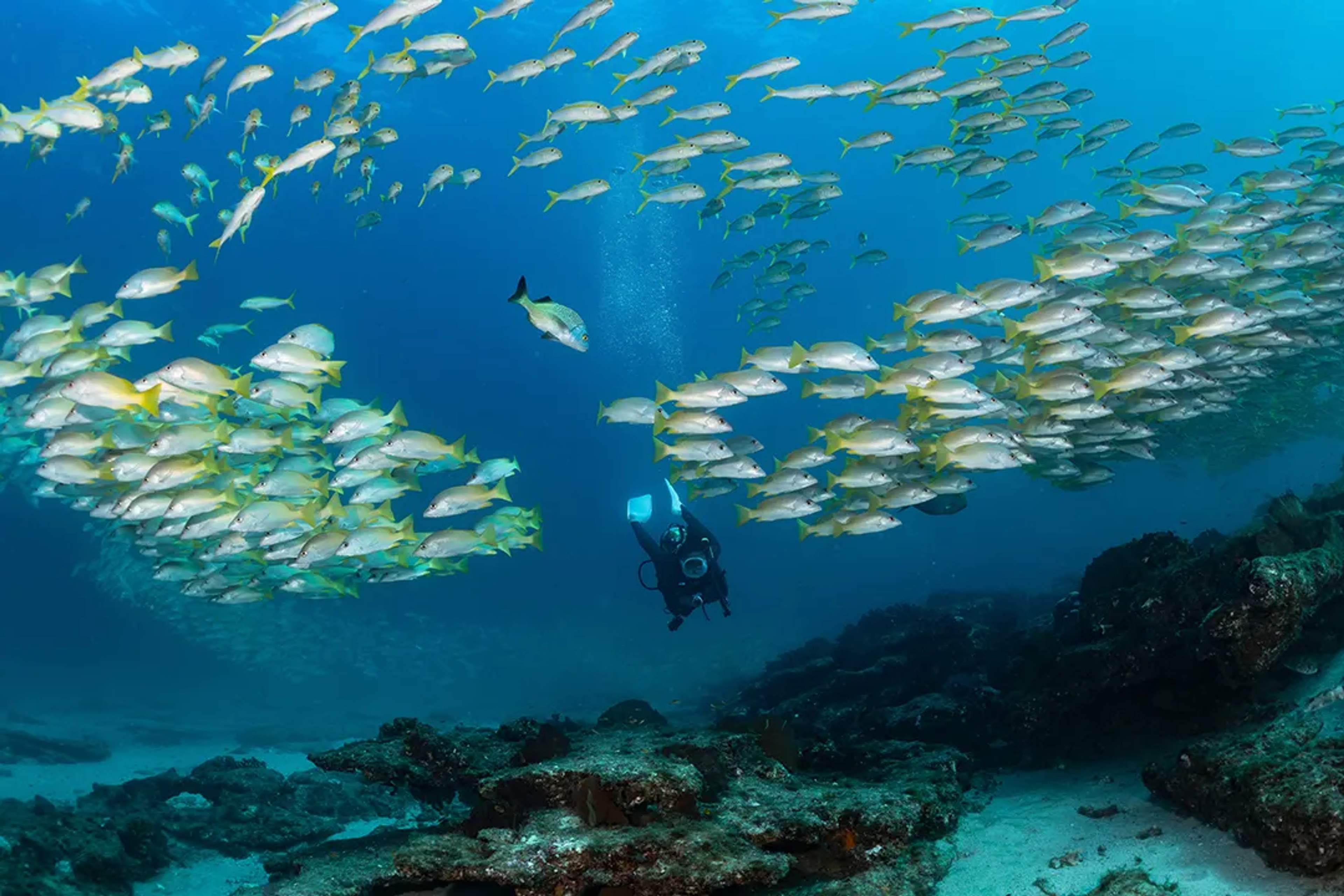
The Cabo Scuba Diving tour navigates these waters with PADI-certified guides who position vessels where granite formations meet vibrant reefs. Book morning departures for optimal sunlight and sea lion activity and the best views of the Lover's Beach's protected waters; this prime timing reveals why Cousteau crowned Cabo "the world's aquarium."
3. San José del Cabo
San José del Cabo's Gallery District serves as the cultural heart of Baja's southern peninsula, where colonial heritage and contemporary artistic expression converge along cobblestone streets dating back nearly three centuries. The district's twelve certified galleries transform into a vibrant communal canvas during Thursday evening Art Walks (5-9 pm, November-June), creating Mexico's most concentrated exhibition space outside major urban centers.
The district surrounds the mission church founded on April 8, 1730, by Padre José de Echeverría and Padre Nicolás Tamaral, a historic landmark that anchored the settlement connecting Pacific-Atlantic trade routes. Today's official Barrio Mágico designation protects architectural heritage along Obregon, Morelos, Guerrero, and Comonfort streets, positioning San José as both a historical treasure and a living artistic community.
The Art & Wine Tour pairs you with professional cultural guides who interpret colonial architecture at Plaza Mijares while connecting you with local artists demonstrating traditional techniques. We recommend timing your visit during the golden hour when sunset illuminates the district's historic facades—this is when you'll experience the authentic creative pulse that has drawn artists to this peninsula for generations.
4. Cabo San Lucas Marina
The modern marina emerged from mudflats dredged 1974-1975, transforming the landing strip and cannery worker housing into 380 slips accommodating vessels to 200 feet. This infrastructure development launched Cabo's evolution from a fishing village to a marine adventure gateway.
Sportfishing fleets depart at dawn hours, targeting Pacific marlin grounds, while tour operators load passengers for Sea of Cortez snorkeling runs. The waterfront promenade connects marina docks to restaurants and shops, creating evening gathering spaces where returning boats display the day's catch.
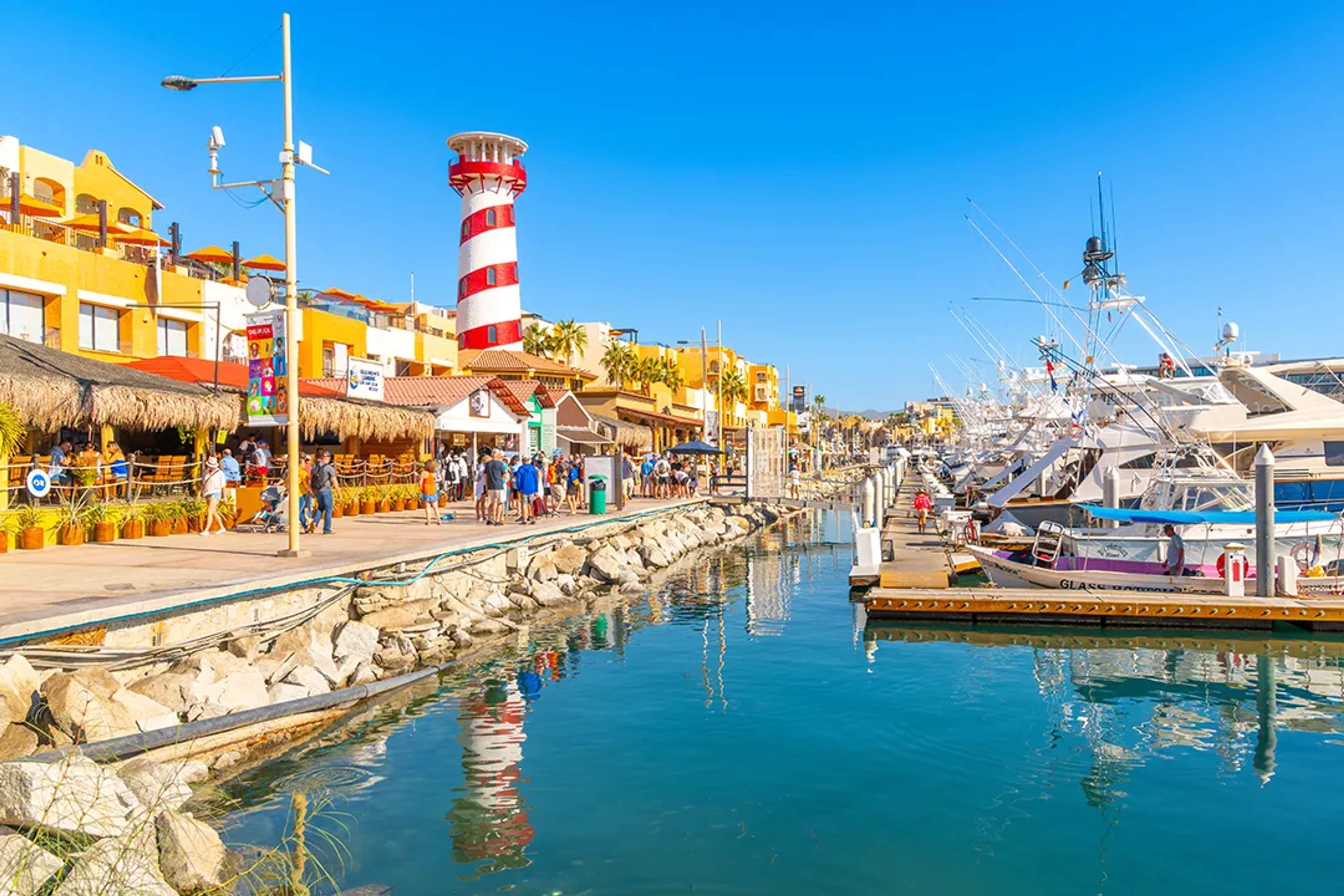
5. Tierra Sagrada Beach & Adventure Park
Tierra Sagrada is a unique natural wonder where the arid landscapes of the Sonoran Desert meet the Pacific coastline. This rare convergence zone, where desert cacti grow alongside crashing ocean waves, creates a stunning backdrop that showcases the incredible biodiversity of the region. The harsh yet vibrant desert environment supports unique plant adaptations, with specialized root systems that draw moisture from seemingly inhospitable terrain.
For those looking to experience this extraordinary landscape up close, the Tierra Sagrada Beach Club & Family Adventure offers the perfect opportunity. Nestled between the desert and the ocean, this all-inclusive destination allows you to relax by the oceanfront pool, savor local Mexican cuisine, and enjoy a variety of activities that bring you closer to Baja’s natural beauty.
With optional adventures like Camel Encounters, ATV Desert Adventures, and Electric Bike Rides, you can explore both the beach and desert landscapes in one unforgettable day.
6. Iglesia de San Lucas
Located in the historic downtown district, this mission church marks the spiritual center of the original Cabo San Lucas settlement. Bilingual masses held at noon on Sundays serve both local and international communities, maintaining the church's role as an active parish center rather than a preserved museum piece.
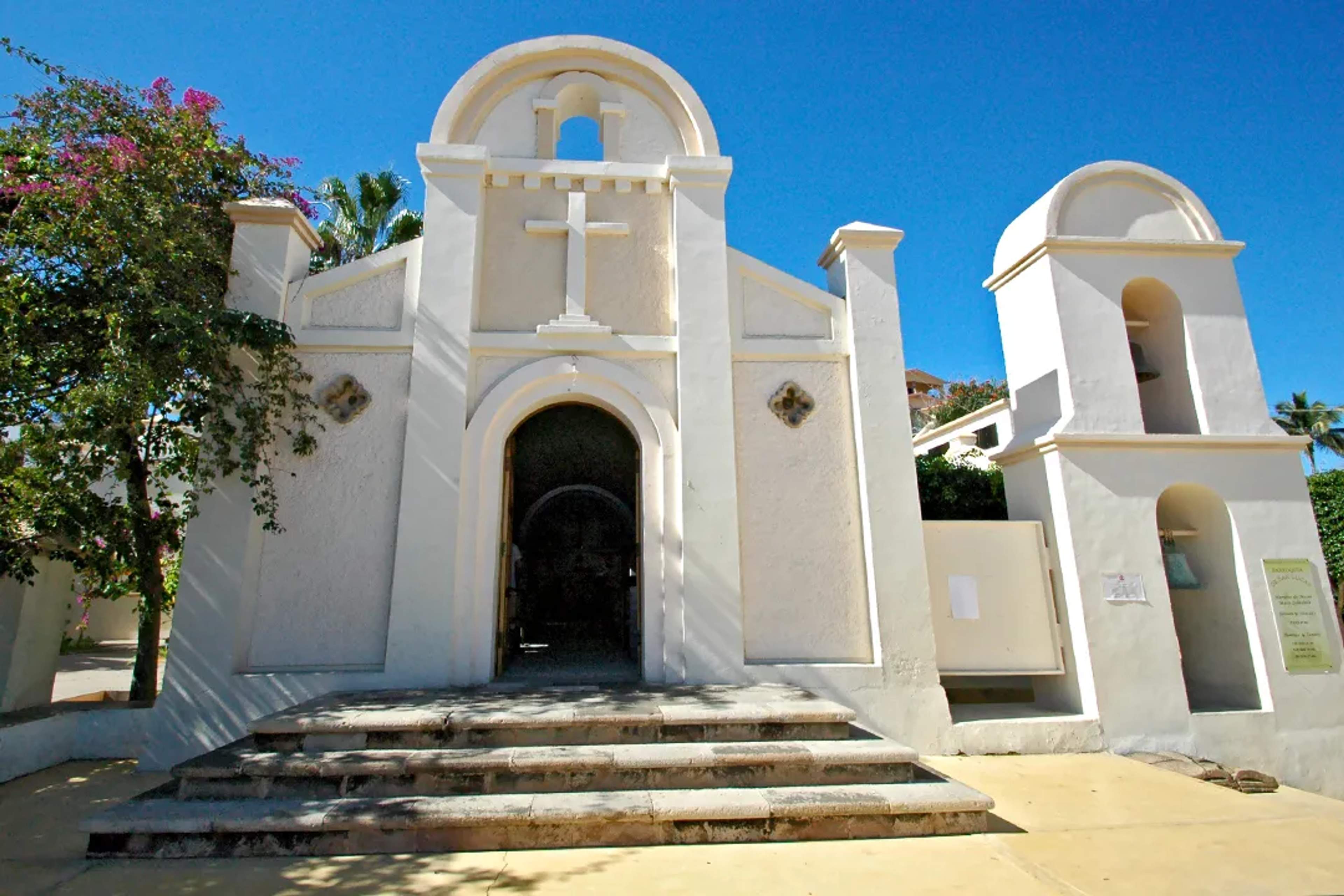
While specific construction dates remain undocumented in official surveys, the church interior remains cool even during midday heat through construction techniques that have endured centuries.
The adjacent Plaza Amelia Wilkes surrounds the church with gardens and walking paths, creating a contemplative space distinct from waterfront resort energy. This represents one of the few standing structures predating Cabo's tourism development. Respectful dress requirements apply—covered shoulders and long pants for visitors. Free access daily allows self-guided appreciation of colonial-era construction techniques and religious art.
7. Sea Lion Colonies
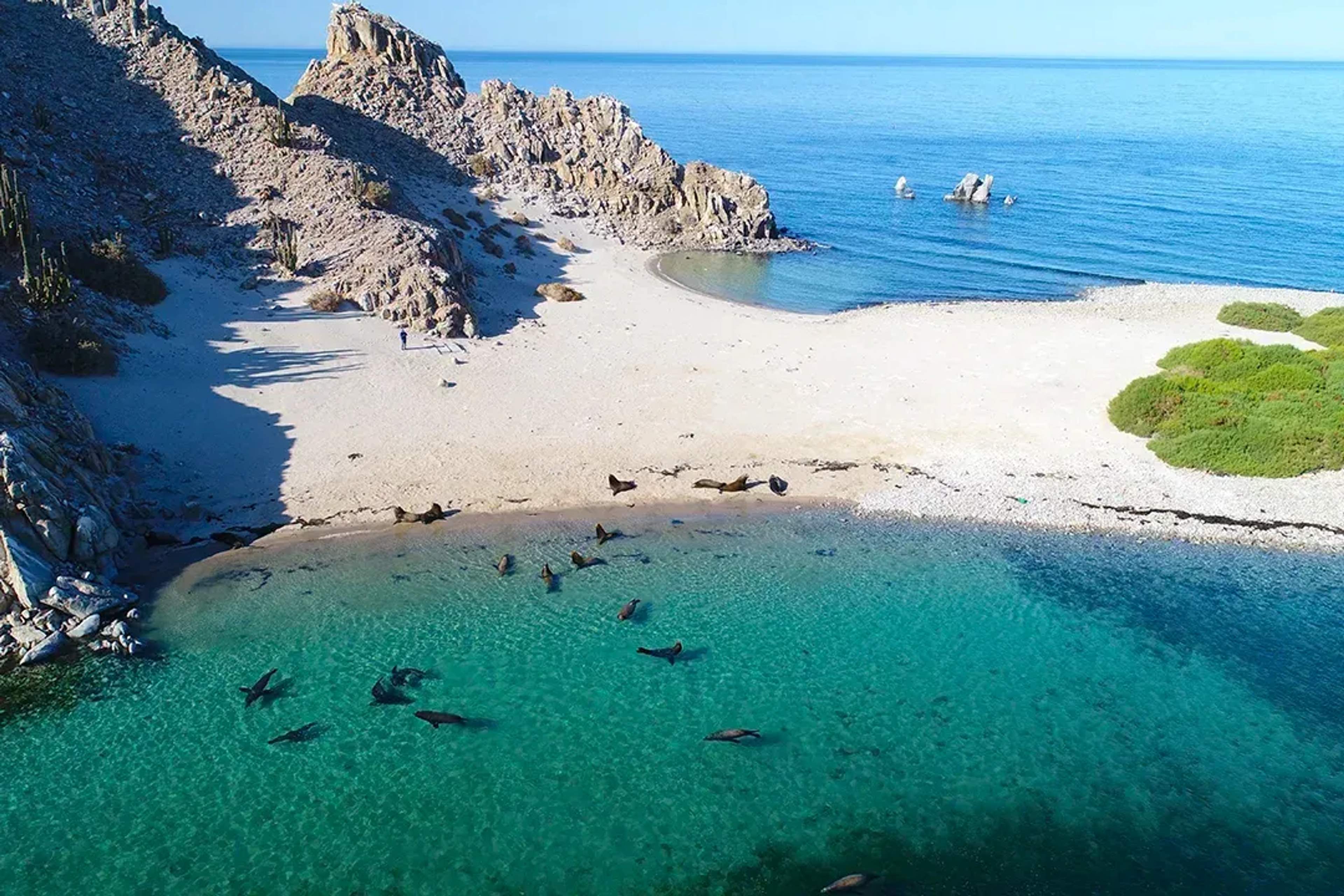
Sea lion colonies inhabit Los Frailes rock formations near Land's End, where curious juveniles approach vessels while adults maintain distance. Your marine guide ensures appropriate viewing distances per Mexican regulations, balancing intimate observation with conservation needs that support responsible wildlife tourism.
Morning hours offer peak activity when sea lions hunt in the nutrient-rich convergence zone—bring binoculars for close observation without disturbing these year-round residents whose behavior varies with seasonal breeding cycles.
8. Casa de la Cultura
The Casa de la Cultura Profra. Nieves Trasviña de Ceseña serves as the municipal cultural center in downtown Cabo San Lucas. The pink facade with tall mirador (lookout tower) marks this cultural center that originally housed Americans during the Mexican-American War of 1847. Rotating exhibitions change seasonally between November and May, high season, and summer months, with programming varying between tourist season and local cultural events.
Your visit to this downtown cultural center provides access to rotating programming that includes art exhibitions, cultural performances, and educational workshops. Free admission allows visitors to view current exhibitions and programming without advance booking.
Check current schedules through municipal cultural offices, as exhibition rotations and event calendars change throughout the year. The cultural center operates alongside the Municipal Public Library as part of Cabo San Lucas's institutional cultural programming.
9. Plaza Amelia Wilkes

Located at Kilometer 0, marking the southern end of the Baja Peninsula, this town square sits adjacent to Iglesia de San Lucas, creating a compact historic district walkable within minutes. Viva La Plaza cultural events occur Friday evenings (October-May) with live music and artisan vendors, creating an authentic community atmosphere beyond tourist-focused marina district programming.
The plaza features gardens and a central gazebo that host community events and cultural activities throughout the year. The plaza's proximity to the mission church allows combined visits for self-guided downtown navigation.
Free access and a family-friendly atmosphere make this an accessible cultural stop. Benches positioned throughout the gardens offer shaded rest spots during midday walking tours of the historic district.
10. Museum of Natural History of Cabo San Lucas
The Museum of Natural History of Cabo San Lucas near Plaza Amelia Wilkes preserves regional natural heritage through exhibits covering geological formation processes and marine ecosystems.
The whitewashed structure features a massive whale skeleton outside serving as a landmark for locating the museum. Exhibits cover paleobotany, geology, anthropology, and marine biology, documenting regional natural heritage that created the conditions Jacques Cousteau documented in his "aquarium of the world" assessment.
Verify current hours, exhibits, and admission details with local tourism offices or the museum directly before planning your visit. The museum's downtown location allows a convenient combination with historic district walking tours of the mission church and Plaza Amelia Wilkes. Educational displays interpret the area's tectonic formation processes and endemic species that make this region scientifically significant.
Experience the Aquarium of the World with Cabo Adventures
Step from resort pools into UNESCO World Heritage waters where Cabo's dual identity unfolds—marine sanctuaries and colonial heritage predating modern tourism. Witness tectonic forces that shaped Land's End and follow whale migration routes established millennia ago.
Create your ideal Cabo journey by combining expert-guided expeditions with self-directed exploration. Book your Cabo adventure today and let our seasoned guides lead you through Cabo's most breathtaking experiences, from navigating underwater granite cathedrals and witnessing magnificent whale migrations to traversing desert landscapes and discovering San José's vibrant art scene. Your immersion into Cousteau's "aquarium of the world" awaits.


